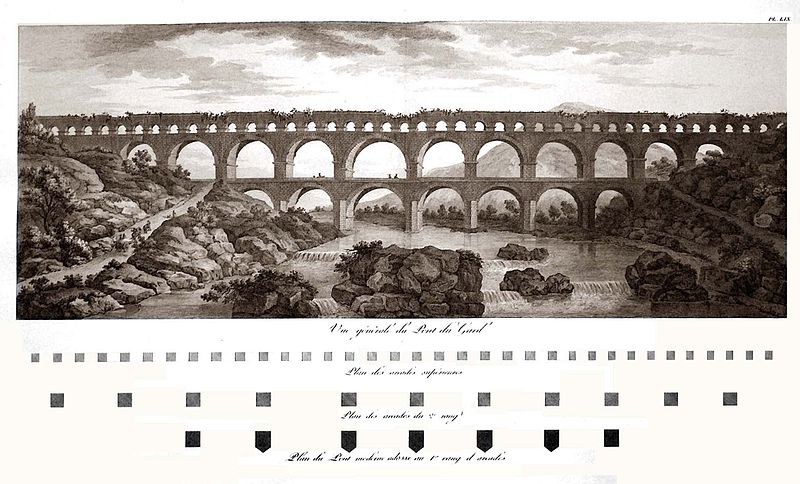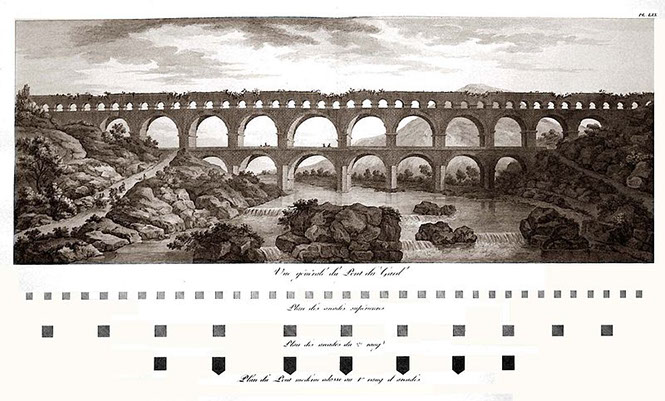
Built on three levels, the bridge is 49 metres high and the longest level is 275 metres long.
Low level: 6 arches, 142 m long, 6 m thick, 22 m high
Medium level: 11 arches, 242 metres long, 4 metres thick, 20 metres high
Upper level: 35 arches, 275 m long, 3 m thick, 7 m high
On the third level there is a path and a water pipe 1.8 m high and 1.2 m thick with a gradient of 0.4 %.
Although the exterior of the Pont du Gard is rough and relatively unfinished, the builders made sure that the inside of the water pipe was as smooth as possible so that the flow of water would not be obstructed. The duct walls were constructed from clad masonry and the concrete floor.
Both were covered with stucco with the incorporation of ceramic shards and tiles. The work was painted with olive oil and covered with Maltha, a mixture of slaked lime, pork fat and viscous fig juice. This produced a surface that was both smooth and durable.



BRIDGE OF GARD
TECHNIQUE
The design of the Pont du Gard represents a fairly early stage in the development of Roman aqueducts. The technique of its design of stacking the arches on top of each other is awkward and expensive, since it would require the use of a very large amount of stone. Later, these aqueducts would have a more sophisticated design, making greater use of concrete to reduce their volume and the cost of construction.











